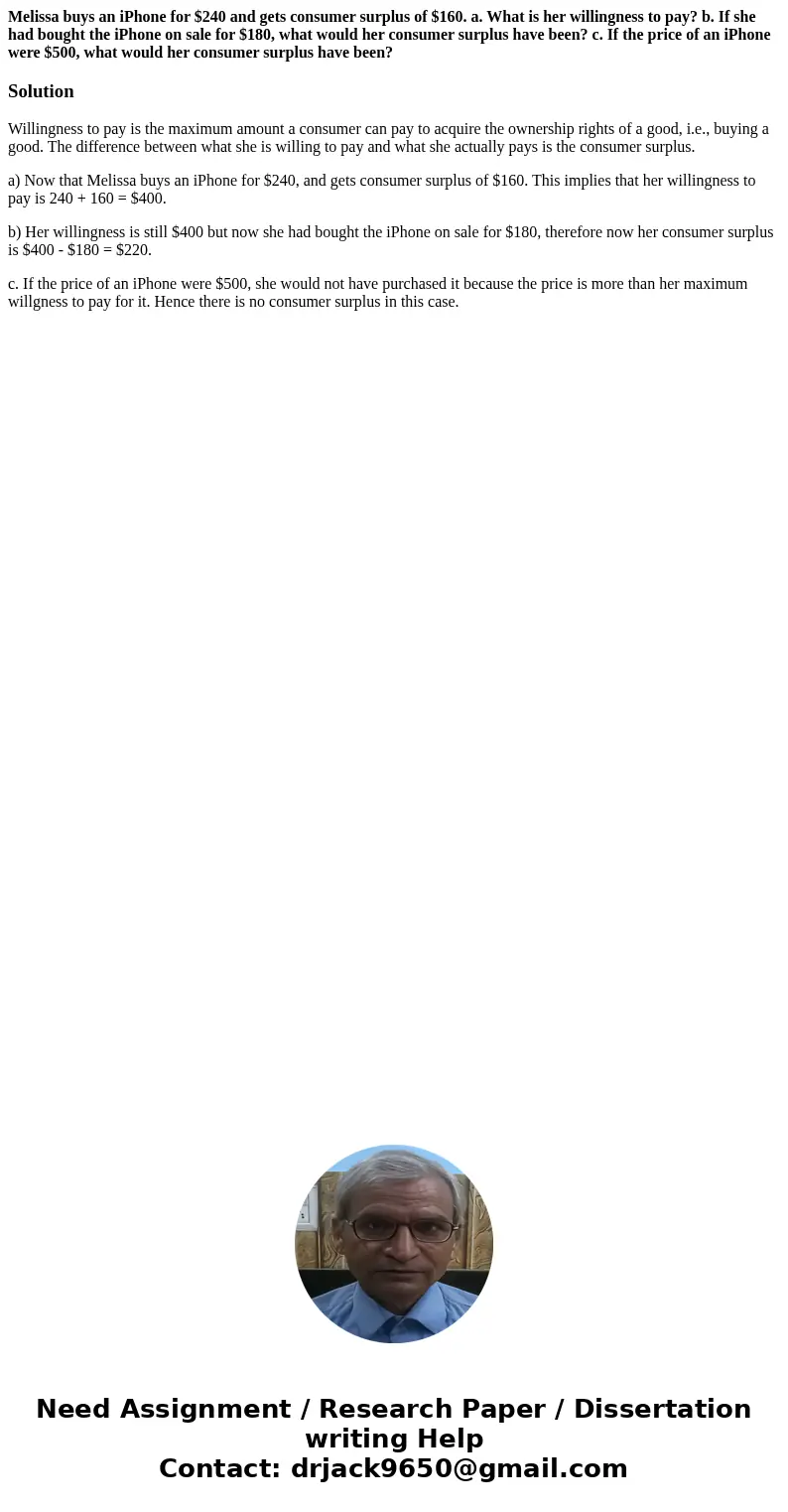Melissa buys an iPhone for 240 and gets consumer surplus of
Melissa buys an iPhone for $240 and gets consumer surplus of $160. a. What is her willingness to pay? b. If she had bought the iPhone on sale for $180, what would her consumer surplus have been? c. If the price of an iPhone were $500, what would her consumer surplus have been?
Solution
Willingness to pay is the maximum amount a consumer can pay to acquire the ownership rights of a good, i.e., buying a good. The difference between what she is willing to pay and what she actually pays is the consumer surplus.
a) Now that Melissa buys an iPhone for $240, and gets consumer surplus of $160. This implies that her willingness to pay is 240 + 160 = $400.
b) Her willingness is still $400 but now she had bought the iPhone on sale for $180, therefore now her consumer surplus is $400 - $180 = $220.
c. If the price of an iPhone were $500, she would not have purchased it because the price is more than her maximum willgness to pay for it. Hence there is no consumer surplus in this case.

 Homework Sourse
Homework Sourse